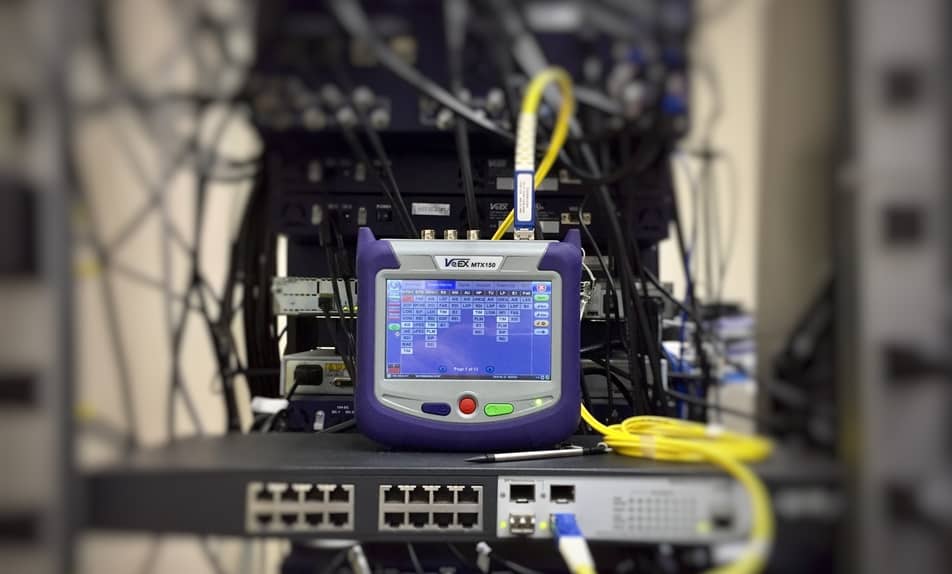How to test for volatile organic compounds (VOCs)

Volatile organic compounds, or VOCs, are everywhere around us, but they don't always make their presence obvious. From gases that lack any odor or color to substances that people can't smell until they've already had adverse health effects, these chemicals are notorious for their role in reducing indoor air quality.
Anyone can look up specific chemicals using the Environmental Protection Agency, or EPA, list of VOCs. There's a big difference, however, between knowing that something like methylene chloride is generally hazardous and understanding the risk it poses in a specific occupied living space. Fortunately, technology is filling in the gaps between theoretical knowledge and practical understanding.
Common VOC Analysis Tools
Modern science depends on standardized sensing methods to detect VOC concentrations. Of course, new developments are constantly coming out, but by using techniques that have their roots in proven health science, smart indoor air quality monitors can dramatically improve detection rates for volatile organic compounds and eliminate false positives.
What kind of sensor should an ideal home environmental health device include? There are a few different varieties to choose from:
Light-aided Sensors
One good way to determine the qualities of an air sample is to subject it to a stimulus and see how it reacts. Although industrial entities like oil rig companies often accomplish this by burning unknown gases to observe the byproducts, homeowners don't have to go to such lengths to monitor chemical emissions.
Photoionization detectors (1), or PIDs, are inexpensive, high-efficiency indicators that bombard air samples with high-energy photons in the ultraviolet, or UV, wavelength range. When VOCs in the sample interact with the UV light, they take on its energy and release negatively charged electrons, which leaves them with a positive charge. The detector circuitry then measures the total charge, which provides an accurate estimation of the VOC concentration. PIDs can detect VOCs in concentrations ranging from fractions of parts per billion, or ppb, to thousands of parts per million, or ppm.
Nondispersive infrared, or NDIR, sensors also depend on gas molecules' tendency to absorb light. When bombarded with infrared illumination, different gases only absorb certain wavelengths of the light. By using an infrared sensor to check which wavelengths are missing after the light passes through the sample chamber, NDIR devices can tell which gases are present with a reasonable degree of accuracy. This is a good way to detect hydrocarbons, water vapor and nitrogen oxides, but it can also pinpoint the presence of many different VOCs.
Semiconductor Sensors
Semiconductors are substances that conduct electricity under certain specific conditions. They're found in phones, computers and countless other devices, but they also play an important role in air quality assessments.
With gas-sensitive semiconductor, or GSS, sensors, the semiconductors are chosen for their sensitivity to VOCs, which allows their electrical conductivity to change in response to contaminated air samples. By measuring the differences in readings, GSS sensors can determine the concentration of VOCs, ozone and other dangers.
MOS, or metal-oxide semiconductor, sensors, operate similarly to GSS devices. Some include heating elements that increase the devices' sensitivity to dangerous gases, such as ethylene glycol and carbon tetrachloride.
Holographic Sensors
Holographic sensors use holograms composed of specially selected or purpose-made materials. These materials have the unique property that interacting with specific molecules, such as VOCs and other chemicals, modifies their refractive index. In other words, the color of the reflection changes, which can be seen by humans or interpreted by machines.
Picking VOC Sensor Technology
These are just a few of the many different sensor types available, and agencies like the EPA are making it easier (2) than ever to choose wisely by evaluating a variety of increasingly low-cost options. It's of the utmost importance, however, to understand that no single sensor is better than others in all situations.
Each technology has its strengths and weaknesses. Good air monitor engineers design comprehensive measurement systems designed to compensate for these flaws and produce accurate VOC emission readings in a variety of circumstances.
Ready to broaden your knowledge of VOC emissions, organic chemical analysis and human biology? Check out these topics:
-
Understand the protection threshold limit values for volatile organic compounds and chemicals.
-
Find out how organic chemicals and volatile organic compounds affect the environment and the health of ordinary people.
-
Safeguard your well-being by getting to know indoor air quality standards and guidelines for substances like carbon monoxide and volatile organic compounds.
Sources
(1) https://www.e-inst.com/wp-content/uploads/2018/04/AQ-14-317-App-Note-VOC-PID-1.pdf
(2) https://www3.epa.gov/ttn/amtic/files/ambient/airtox/2015workshop/Evaluation%20of%20VOC%20Sensors.pdf